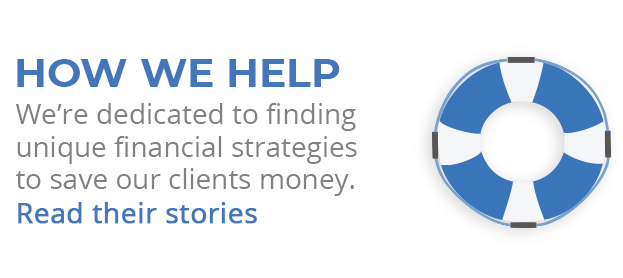Little things matter. When planning for retirement, people naturally think about the big things – arranging sufficient income, amassing enough savings, investing so that you don’t outlive your money, managing forms of risk. All of this is essential. Still, there are also little financial adjustments you can make at mid-life that may pay off significantly for you down the road.
Drop some recurring expenses & do something else with the money. How much do you spend for cable or satellite TV? Could you drop that expense or find a cheaper provider? How about the money you spend each month on a storage unit? A service contract? A subscription to this or that? Two or three such monthly expenses might be setting you back $100, $200 or more. What if you used that money to pay yourself? What if you saved it? What if you invested it and let it compound?
Assign your investments to appropriate accounts. This could be a route toward tax savings. When you retire, you will probably want to structure your retirement withdrawals so that money comes out of your taxable accounts first, then tax-deferred accounts, and then tax-free accounts. This gives assets in tax-deferred and tax-free accounts a little more time to grow.
Before that time arrives, you will likely find it ideal for your taxable accounts to hold investments taxed at lower rates, and your tax-advantaged accounts to hold investments taxed at higher rates. Various investment classes (stocks, commodities, bonds and so forth) are taxed differently, and some investors ignore that reality.
How much of a difference could such placement make? Here’s a long-range hypothetical example. Imagine putting $4,000 each year in a mutual fund returning 8% annually, with 3% of that 8% coming from income. If that fund is held in a tax-deferred account under those circumstances for 40 years, it grows to $1,036,226, and $880,792 when adjusted for taxes. Put that fund in a taxable account (annual contributions adjusted to $2,880, the return taxed annually at 15%) and you wind up with $841,913, actually $771,789 adjusting for taxes.
Investigate fees. High fund and account fees can eat into your retirement savings effort, and most people never check on them. If your 401(k) plan charges 0.4% in annual fees and you contribute $10,000 or more to it annually over the decades, those tiny fees could shave tens of thousands of dollars off the account balance by your retirement date. Investment fees of 0.5% for index funds and 1% for actively managed funds are probably enough to make you think twice about putting up with anything greater.
Ditch a zero-interest savings account for a better one. Interest rates are rising, but they are still far from historical norms. If you have money in a savings account that is yielding 0.15%, then search online for one that might yield 1.5% or 2% or more.
Strategize with your credit cards. If you always pay the full balance off each month, look for a card with rewards points – you could use them instead of cash someday. If you can’t pay off monthly balances fully, your strategy is simple – you want a credit card with the lowest interest rate you can find.
See what you’re spending. Few pre-retirees do this, and that’s because when they think “track monthly expenses,” they think of pen and paper and a couple of dull hours poring over receipts and bills. Good news: software exists to do some of the work for you, software that can keep you apprised of household budgetary limits, trends and progress. Some of the budgeting software out there now can help you retain more money to save for the future.
Spend less on food & clothes. Online discounts (and coupons) abound, and it is astonishing how many people don’t take advantage of them. Your smartphone and your PC aren’t the only sources; the Sunday paper can pay for itself this way. In the rear-view mirror, many food and clothes purchases are less than necessary, sometimes frivolous.
Reduce your debt. Some of the above moves may help you do just that. This year the average credit card debt per U.S. household was $8,431. Whether you owe more or less than that, such debt is certainly worth whittling down.

About the Independent Financial Advisor
Robert Pagliarini, PhD, CFP®, EA has helped clients across the United States manage, grow, and preserve their wealth for the past 25 years. His goal is to provide comprehensive financial, investment, and tax advice in a way that was honest and ethical. In addition, he is a CFP® Board Ambassador, one of only 50 in the country, and a real fiduciary. In his spare time, he writes personal finance books, finance articles for Forbes and develops email and video financial courses to help educate others. With decades of experience as a financial advisor, the media often calls on him for his expertise. Contact Robert today to learn more about his financial planning services.










